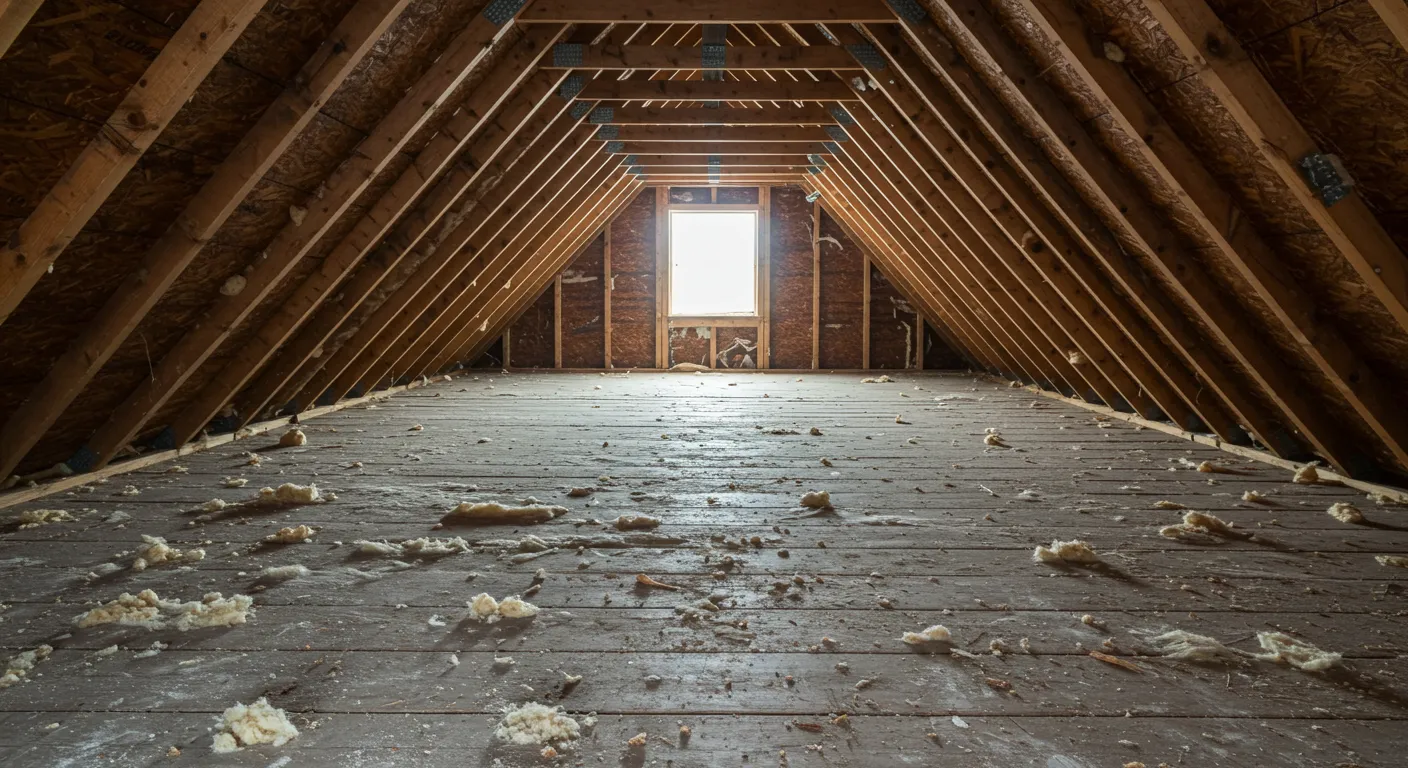Spray foam insulation has gained popularity due to its excellent thermal performance and air-sealing properties. However, like any other insulation material, it comes with its own set of drawbacks. This article explores the potential downsides of spray foam insulation, providing homeowners in Fresno, CA with a well-rounded understanding of its limitations.
Understanding Spray Foam Insulation
Spray foam insulation is a chemical-based insulating material that expands upon application, creating an airtight seal. It is commonly used in residential and commercial buildings to enhance energy efficiency. Despite its benefits, certain drawbacks should be considered before installation.
Potential Downsides of Spray Foam Insulation
1. High Initial Cost
Spray foam insulation is more expensive than traditional insulation materials like fiberglass or cellulose. The cost of materials and professional installation can be significant, making it a costly upfront investment.
Cost Breakdown:
| Insulation Type | Average Cost per Square Foot |
| Open-Cell Spray Foam | $0.44 – $0.65 |
| Closed-Cell Spray Foam | $1.00 – $1.50 |
| Fiberglass Batt | $0.40 – $1.00 |
While spray foam can provide long-term energy savings, the initial expense can be a deterrent for some homeowners.
2. Complex Installation Process
Unlike other insulation types that can be installed as a DIY project, spray foam insulation requires professional expertise. The chemicals must be mixed and applied correctly to avoid issues such as improper expansion or adhesion problems.
Challenges of Installation:
- Requires specialized equipment
- Must be applied in controlled conditions
- Incorrect application can lead to performance issues
3. Potential Health Risks
Spray foam insulation contains chemicals like isocyanates, which can cause respiratory irritation and allergic reactions if inhaled during installation. Proper safety measures, including ventilation and protective gear, must be used.
Health Concerns:
- Off-gassing during curing may cause short-term respiratory issues.
- Long-term exposure to improperly cured foam can result in lingering chemical odors.
- Some individuals report sensitivity to volatile organic compounds (VOCs) emitted by spray foam.
4. Environmental Considerations
While spray foam improves energy efficiency, some formulations contain hydrofluorocarbons (HFCs), which contribute to global warming. Although eco-friendly alternatives exist, they may not be as widely available.
Environmental Drawbacks:
- Some formulations have a high global warming potential (GWP).
- Non-recyclable once applied.
- The manufacturing process may involve hazardous chemicals.
5. Risk of Improper Expansion
Spray foam insulation expands upon application, but if not applied correctly, it can lead to overexpansion or underexpansion. This can cause structural damage or gaps that reduce insulation effectiveness.
Common Issues with Expansion:
- Overexpansion can warp walls or ceilings.
- Under expansion results in air leaks and reduced efficiency.
- Application in cold or humid conditions may impact foam performance.
6. Potential Moisture and Mold Issues
While closed-cell spray foam is moisture-resistant, open-cell foam can absorb water if not sealed properly. If moisture gets trapped behind the insulation, it can lead to mold growth and structural damage.
Key Concerns:
- Open-cell foam can retain moisture, leading to mold.
- Improper installation in humid areas can lead to condensation.
- Once damaged by moisture, removal and reinstallation can be costly.
7. Difficulty in Removal or Repairs
Once spray foam is installed, removing or repairing it is a challenging and costly process. Unlike fiberglass batts that can be replaced easily, spray foam adheres to surfaces permanently.
Challenges of Removal:
- Requires cutting and scraping off hardened foam.
- Can damage walls or structures during removal.
- Costly and labor-intensive compared to other insulation types.
How to Mitigate These Downsides
While spray foam insulation has potential drawbacks, many of these issues can be mitigated with proper planning and professional installation.
Best Practices for Installation:
- Hire a certified installer: to ensure the correct application.
- Choose low-VOC spray foam: to minimize off-gassing.
- Ensure proper ventilation: during and after installation.
- Select closed-cell foam: in areas prone to moisture buildup.
Conclusion
While spray foam insulation offers excellent energy efficiency and air-sealing benefits, it does have certain drawbacks, including high installation costs, potential health concerns, and environmental impacts. Homeowners in Fresno, CA should weigh these factors carefully before choosing spray foam insulation for their property.
Get Expert Spray Foam Insulation Services in Fresno, CA
For professional and high-quality insulation services, homeowners can turn to Fresno Spray Foam Insulation Masters for expert guidance and installation solutions. Contact us today to learn more about how spray foam insulation can benefit your home.
Frequently Asked Questions
How long does spray foam insulation last?
Spray foam insulation can last 20 to 30 years or more with proper installation and maintenance.
Is spray foam insulation safe for homes?
Yes, once cured, spray foam insulation is safe. However, precautions must be taken during installation to avoid exposure to harmful chemicals.
Can spray foam insulation be applied over existing insulation?
It is generally not recommended, as existing insulation can interfere with the foam’s adhesion and effectiveness.
Does spray foam insulation reduce noise?
Yes, spray foam has sound-dampening properties, particularly open-cell foam, which absorbs noise more effectively than closed-cell foam.
Is spray foam insulation suitable for all climates?
Yes, but closed-cell foam is better for colder climates due to its higher R-value and moisture resistance.
Can spray foam insulation help lower energy bills?
Yes, by reducing air leaks and improving thermal performance, spray foam insulation can lead to significant energy savings.
How long does it take for spray foam insulation to cure?
Most spray foam cures within 24 hours, but proper ventilation is recommended to eliminate residual odors.
What are the alternatives to spray foam insulation?
Alternatives include fiberglass batts, cellulose, mineral wool, and rigid foam board, each with its pros and cons.
Can spray foam insulation be painted?
Yes, spray foam can be painted once it has fully cured, but it may require a primer to ensure proper adhesion.
Is spray foam insulation flammable?
Spray foam is combustible and must be covered with a thermal barrier, such as drywall, to meet fire safety regulations.




